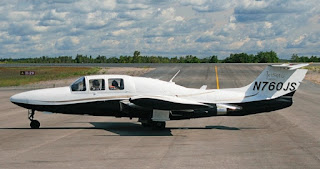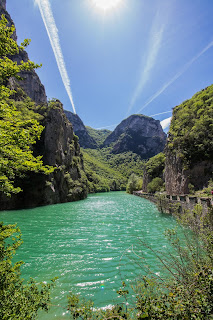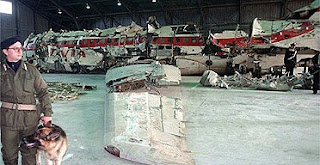Death in plane crash remains an unsolved mystery
 |
| Enrico Mattei rose to political prominence in the years after the Second World War |
Enrico Mattei, one of the most important figures in Italy’s
post-War economic rebirth, was killed on this day in 1962 in a plane crash near
the village of Bascapè in Lombardy.
Accompanied by a Time-Life journalist, William McHale,
Mattei was returning to Milan from Catania in Sicily in a French-built
four-seater Morane-Saulnier jet being flown by Irnerio Bertuzzi, a respected pilot
who had flown many daring missions during the Second World War.
They were on their descent towards Milan Linate when the
crash happened, less than 17km (10.5 miles) from the airport.
Mattei, a politically powerful industrialist, best known for
turning round Italy’s seemingly unviable oil industry, was not short of enemies
and after his death there was considerable speculation that it did not happen
by accident.
A government-led investigation, overseen by the then Italian
Defence Minister Giulio Andreotti, concluded that a storm was to blame for the crash, even though the pilot was highly experienced and very unlikely to have
allowed bad weather to bring him down.
Questions about the initial inquiry’s findings led to a
second inquiry was opened in 1966 but shelved without reaching a conclusion.
 |
| Mattei established ENI as Italy's state oil company in the early 1950s |
In the fevered atmosphere that prevailed in Italy at the
time, however, with much social unrest and the Italian Communist Party
threatening the grip of the Christian Democrats, the conspiracy theories never
went away.
Indeed, there were good grounds to imagine that dark forces
might have been involved, given the controversial way in which Mattei had gone
about reviving Italy’s ailing oil industry.
Born at Acqualagna in Marche in 1906, Mattei had experience
in the tanning and chemical industries in the late 1920s and early 1930s and
joined the Fascist Party in 1931, although he was never active politically and
was persuaded by the disastrous course of the Second World War to join
anti-Fascist groups during the 1940s.
After Mussolini was ousted in 1943, Mattei supplied weapons to
the Italian resistance and aligned himself with the newly-formed Christian
Democrats, participating in the Northern Italian military command of the
National Liberation Committee.
He went on to become a powerful figure within the Christian
Democrats, for whom he sat in the Chamber of Deputies between 1948 and 1953.
But it was the decision of the National Liberation Committee, in
the immediate aftermath of war, to put him in charge of the Fascist-instigated
state-owned oil company, Agip (Azienda Generale Italiana Petrolio), that
defined his life.
 |
| A Morane-Saulnier MS 760 similar to the one in which Mattei was travelling when he was killed |
Mattei’s brief was to close Agip, which was seen as
unsustainable. Instead, Mattei rebuilt
it, exploiting newly-discovered oil and methane sources in the Po
Valley, which he used to supply the postwar industrial growth in northern Italy with vital
energy supplies.
He ploughed profits back into more exploration and ultimately
persuaded the government, despite opposition from within his own party, to set
up a new company, called Ente Nazionale Idrocarburi (ENI) with control over the
petrochemical industry throughout Italy.
It was as president of ENI that Mattei began to acquire
enemies. Keen to develop international operations once it became clear Italy
could not be self-sufficient in oil, he persuaded parliament to support a
massive expansion of the company, often – it became clear later – using company
money to pay sweeteners.
However, in the international field he was up against the
might of the cartel he dubbed the Seven Sisters – the seven major companies,
mainly American, that controlled 85 per cent of the world’s petroleum reserves
and kept prices at a high level.
 |
| Mattei's desk is preserved at a small museum dedicated to his memory in his home town of Acqualanga |
Determined to get a better deal for Italy, Mattei began to make
arrangements of his own that bypassed the cartel, with the poorer Middle East
and north African countries and, most controversially, with Russia.
This engendered opposition from the United States, who saw
the deals he struck with Morocco, Tunisia, Egypt and Iran as severely
detrimental to their own interests, and from NATO, who feared that a major
trade link between Italy and Russia would only aid the march of communism in
Italy, which they were committed to preventing.
Mattei upset the French, too, by secretly funding the
independence movement in French colonial Algeria, again to facilitate
preferential oil agreements.
Thus the finger of suspicion soon began to point at America
and France, in the shape of the CIA, the French secret services and the French
far-right paramilitary group, the OAS.
In 1974 there was another inquiry, prompted by the disappearance in
Sicily of a journalist, Mauro de Mauro, who was looking into Mattei’s business
dealings for a film about him being planned by the director, Francesco Rosi, and the claim by a
former agent of the French intelligence agency SDECE, that Mattei had been
eliminated by them.
Again, no conclusion was reached but in 1995 a further inquiry was launched, which took into account a claim by the Mafia
pentito (supergrass) Tommaso Buscetta that Sicilian Cosa Nostra members had
killed Mattei at the request of the American Mafia, but was largely concerned
with some wreckage from the plane that had found its way to the officer of the
public prosecutor in Pavia, under whose jurisdiction that crash scene fell.
Fragments saved at the scene by an Italian secret
service agent had been handed to Mattei’s nephew, Angelo, who in turn gave them
to the prosecutor. This prompted an
exhumation of the bodies of Mattei and Bertuzzi, the pilot, and a new
post mortem that identified clear indications that an explosion had taken place
on the plane while it was still in the air, almost certainly caused by a bomb triggered when the landing gear
was activated.
On the basis of this evidence, a judge quashed Andreotti’s
original pronouncement that the deaths were caused accidentally and reclassified
them as homicide, although the identity of the perpetrators remains an unsolved
mystery.
 |
| The beautiful Gola di Furlo |
Travel tip:
The town of Acqualagna, which is situated about 40km (25
miles) inland of Pesaro to the southwest, is in the valley of the Candigliano
river close to where it is joined by the Burano, just upstream from the
beautiful Gola di Furlo – the Furlo pass – a gorge formed between two mountain
peaks by the force of the Candigliano, along which was built the Roman road Via
Flaminia, part of which passes through a tunnel built into the rock by the
Romans at the narrowest part of the gorge. The house in which Mattei was born contains a small museum dedicated to his memory, which can be viewed by appointment.
 |
| Milan's Linate airport as it appeared when commercial operations began in 1930s |
Travel tip:
Linate airport, situated less than 10km (6 miles) from
Piazza del Duomo, is Milan’s city airport, although it nowadays handles
considerably fewer passengers than Malpensa, which is almost 50km (30 miles)
out of town, just a few kilometres from Lake Maggiore. Linate began commercial
operations in the 1930s when it was built to replace Taliedo airport, just to
the south of the city, which had been one of the world’s first aerodromes but
was too small for significant commercial traffic.










